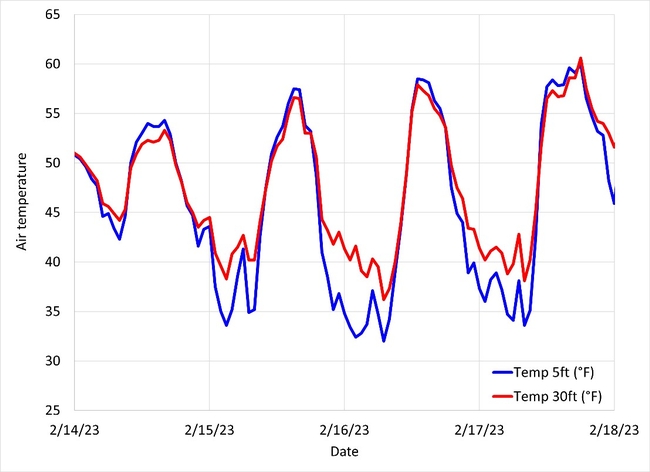Coastal California crops include many which are sensitive to frost, including grapes, strawberries, avocado and citrus. Our primary active protection measures are water and wind; water for sprinkler frost protection is very effective in many situations, but the scarcity and high cost of water is making it increasingly difficult to justify, and the high rates of water application can degrade crop quality in some situations. Wind machines are therefore gaining increasing attention as an attractive alternative where conditions permit their use.
Wind machines generate a warming benefit primarily by mixing the warmer air aloft with the colder air near the crop. This situation of having warmer air aloft and colder air near the ground surface is termed a temperature inversion. Temperature inversions tend to form under nighttime conditions of clear skies and little to no wind; these are the typical conditions which drive a radiation frost. The cloudier and/or windier the nighttime conditions, the weaker the inversions. Under advective frost conditions, the air temperature aloft may actually be colder than near the ground; clearly under such conditions the operation of wind machines can be detrimental to the crop, hence the importance to have some understanding of the patterns of temperature inversions in our growing regions.
Measurements of the temperature inversion can be used in two fundamental ways. Firstly, as part of a site assessment, to help determine whether or not wind machines may be suitable for use at the site. Secondly, to help guide decisions of whether or not to utilize wind machines during a particular frost event. For the former, measurements can be made with inexpensive data loggers which store the values for later evaluation well after the frost period. For the latter, a more expensive weather station which can provide real-time data to users will be required.
Get the full story at: https://ceventura.ucanr.edu/newsletters/Topics_in_Subtropics99392.pdf
